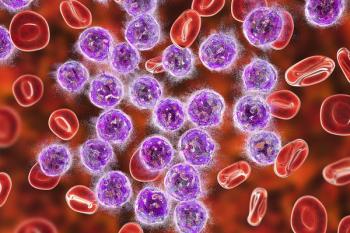
Oncology NEWS International
- Oncology NEWS International Vol 9 No 7
- Volume 9
- Issue 7
New Report Lists 218 Known or Likely Human Carcinogens
BETHESDA, Md-The number of substances “known” or “reasonably anticipated” to cause human cancer now stands at 218, according to the newly published Report on Carcinogens, 9th edition. The new number represents a total increase of 14 substances over the 8th edition. Sixteen substances were added to the previous list, and, for the first time, two were removed.
BETHESDA, MdThe number of substances known or reasonably anticipated to cause human cancer now stands at 218, according to the newly published Report on Carcinogens, 9th edition. The new number represents a total increase of 14 substances over the 8th edition. Sixteen substances were added to the previous list, and, for the first time, two were removed.
Report on Carcinogens, which Congress first ordered prepared in 1978, is published every 2 years by the National Toxicology Program (NTP), headquartered at the National Institute of Environmental Health Sciences (NIEHS), Research Triangle Park, NC.
The purpose of the report is to identify potential cancer hazards, and it does not take into account potential benefits of substances. Some oncologic drugs, for example, are listed because their use can lead to second cancers.
People should not make decisions concerning the use of a given drug, or any other listed agent, based solely on the information contained in the report, NTP warned. Decisions of this type should be made only after consulting with a physician or other appropriate specialist about both risks and benefits.
The artificial sweetener saccharin and ethyl acrylate, which is used in making latex paints and textiles, were both removed from the list of substances reasonably anticipated to be a human carcinogen. Saccharin had been listed in the report since 1981 and ethyl acrylate since 1989.
Two decades ago, when saccharin was shown to produce bladder tumors in rats, it was a prudent, protective step to consider the sweetener to be a likely human carcinogen, said NIEHS director Kenneth Olden, PhD, who also heads the NTP. However, our understanding of the science has advanced and allows us to make finer distinctions today. Studies now indicate that the rat bladder tumors arise from mechanisms that are not relevant to the human situation.
As for ethyl acrylate, new studies have shown that the tumors found in animals developed only when the chemical was given orally in high concentrations, which resulted in persistent and severe gastric tissue injury.
Saccharin and ethyl acrylate were the first substances removed from the list since NTP established a formal delisting procedure in 1996.
New on the List
Newly listed in the report and given known human carcinogen status are environmental tobacco smoke, tobacco smoking, and smokeless tobacco; consumption of alcoholic beverages; and solar ultraviolet radiation and exposure to sunlamps and sunbeds (tanning beds).
Tamoxifen (Nolvadex) was also added to the list, based on studies that show the drug causes uterine cancer.
There has been concern expressed that the listing of tamoxifen in the 9th Report could raise concerns among patients regarding its use for cancer treatment or prevention, the NTP said. In this instance, the benefits of exposure to the substance have been determined by the FDA to outweigh the risks entailed. . . It is very important that the public and physicians be aware of potential risks so that they have the necessary knowledge to weight the benefits versus the risks of using tamoxifen.
Two other new listings are strong inorganic acid mists containing sulfuric acid, used in the manufacture of isopropyl alcohol, lead batteries, phosphate fertilizers, soap and detergents, synthetic ethanol, and pickling and other acid treatments of metals, and dyes metabolized to benzidine, used mainly for dyeing textiles and paper.
TCDD (2,3,7,8-tetrachlorodibenzo-p-dioxin) has been proposed for upgrade to the known to be a human carcinogen category, but the proposed listing is currently in litigation.
Upgraded to Known Carcinogen
Substances upgraded from the reasonably anticipated list to known human carcinogen are:
Crystalline silica of respirable size, primarily quartz dust occurring in industrial and occupational settings.
1,3-Butadiene, used in making synthetic rubber.
Cadmium and cadmium compounds, found in batteries, plastics, synthetic products, and alloys.
Ethylene oxide, used in making other chemicals and for sterilizing medical devices.
Six substances were added to the reasonably anticipated list:
Diesel exhaust particulates, based on findings of elevated lung cancer rates in occupational groups exposed to diesel exhaust, including railroad, bus garage, and trucking company workers.
Isoprene, a major component of natural rubber used in making synthetic rubbers and found in tobacco smoke and automobile exhaust.
Chloroprene, used primarily in making elastomer polychloroprene (neoprene).
Phenolphthalein, used as a laboratory reagent and acid-base indicator, and formerly as an ingredient in over-the-counter laxatives.
Tetrafluoroethylene, used in the production of many polymers.
Trichloroethylene, primarily a degreaser of metal parts and once used to decaffeinate coffee.
Articles in this issue
over 25 years ago
Couric Urges Doctors to Talk to Patients About Colon Cancerover 25 years ago
Automated Imaging Notification System Close to Fail-Safeover 25 years ago
Higher Dairy Consumption Linked to Prostate Cancer Riskover 25 years ago
First-Year Funding of Early Detection Research Network Completeover 25 years ago
Gritty Antitobacco Ads and More From Legacy Foundationover 25 years ago
Tositumomab Effective for Low-Grade Follicular Lymphomaover 25 years ago
New Awards Spotlight Courage of Cancer Survivorsover 25 years ago
Hospital Volume Shown to Predict Breast Cancer Outcomeover 25 years ago
New Drug Information Websiteover 25 years ago
NCCN Presents Updated Colorectal Cancer GuidelinesNewsletter
Stay up to date on recent advances in the multidisciplinary approach to cancer.





















































































